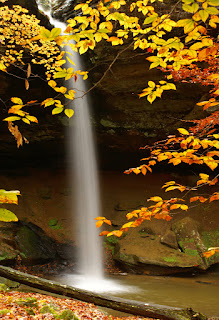 In part 4 of this series let's look at a concept that is so obvious, we sometimes completely overlook it: Simplicity of Purpose (SoP). Simply stated SoP means that everything in the photograph is there for a reason. Nothing is there that detracts from the story the image is trying to portray. It follows the old adage, keep it simple.
In part 4 of this series let's look at a concept that is so obvious, we sometimes completely overlook it: Simplicity of Purpose (SoP). Simply stated SoP means that everything in the photograph is there for a reason. Nothing is there that detracts from the story the image is trying to portray. It follows the old adage, keep it simple.The most compelling images are almost always the ones with the simplest composition. Understand please that an image can contain a great deal of complexity to it. However, the images creating the most impact are the ones where the general theme of the message is carried all the way through. In other words, a great photograph almost always tells a single story. If you have multiple stories going on in your image they tend to confuse the viewer making it difficult for them to lock in on what you were attempting to show. Some examples of this include things like having a cluttered background, or powerlines showing up that are not needed, or no real theme to your image...what Ansel Adams called 'Confused Seeing'.
When trying to simplify your conpositions look for those slivers of visual opportunity. You may indeed be looking at a grand vista, but look at the vista and identify what is actually capturing your imagination. Is it the clouds, how the shadows flow across the landscape, or, what about the barn or the random rolls of hay scattered across the field? Maybe it is none of those. Maybe it is something smaller, more subtle like how the barn is reflected in the pond. Focus in on what is most important to your story and capture those moments.
Closely related to SoP is a concept known as Finding Order Amongst the Chaos (FOAC). Sometimes I will be at a location and I know there is something there working toward a great photo, but, my images just do not seem to capture the mood. They just seem cluttered and confused. What I do then is to narrow down the options...look for the order, or that one thing that stands apart from the overall scene yet still defines the bigger story. Indeed, defining the bigger story by using the smaller portions is a fantastic way to create something extraordinary when nothing else seems to be working. FOAC is a great technique to help you create simplicity.
Simplicity of Purpose, Find Order Amongst the Chaos, two extremely useful ideas to help you discover the extraordinary images your heart knows is there.




















